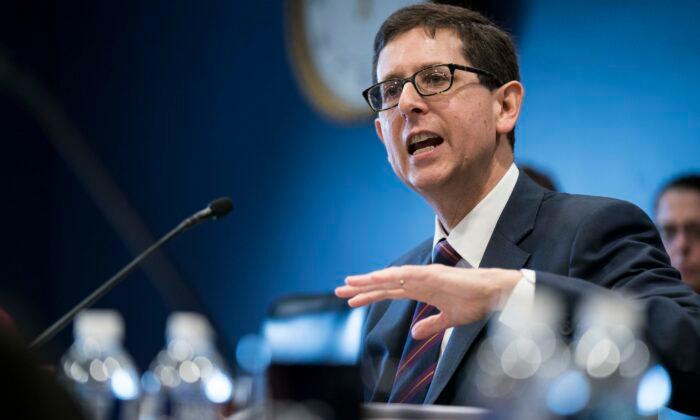President Joe Biden’s proposed discretionary budget for 2024 is well below baseline projections for both funding and spending that were estimated by the Congressional Budget Office (CBO).
The president’s proposed funding is 4 percent below CBO projections for the year and 12 percent for the coming decade, according to a May 18 report.
About 75 percent of the reductions were achieved by budgeting less for emergency requirements than the CBO had projected.
Spending is also below CBO projections by about 2 percent. Defense spending is 3 percent below CBO’s projection, and all other categories are 1 percent under the estimate.
Measured as a percentage of the nation’s gross domestic product (GDP), the two categories of discretionary spending total 5.3 percent. Defense spending is projected to equal 2.5 percent of GDP and non-defense spending 2.8 percent.
That’s the lowest percentage of GDP in both categories for 50 years, the CBO reported.
Meaning of Discretionary
Discretionary spending is spending that Congress votes on each year. This includes funding national defense, border security, transportation, education, some veterans’ benefits, environmental protection, nutrition programs, and most other government services.The other major category in the federal budget is non-discretionary spending. It is called non-discretionary because Congress does not vote on its approval. This includes funding for programs like Social Security, Medicare, and student loans, which were approved by Congress years ago.
Year-Over-Year
The president’s 2024 discretionary budget totals $1.84 trillion. The total budget for 2023 was about $1.83 trillion. The amount actually spent in 2022 was around $1.79 trillion.Republicans have proposed that the 2022 level be used as an upper limit for 2024 discretionary spending, which the president has fought against. Republicans see the cap as a reasonable way to curb deficit spending. Democrats say it will require steep cuts to federal programs that aid average Americans.
To show the relative impact of changes in discretionary spending on the entire federal budget, actual spending for 2022 in all categories was $6.3 trillion.
Of that amount, $4.15 trillion (66 percent) was non-discretionary, and $1.7 trillion (33 percent) was discretionary.
The proposed increase in federal spending from 2023 to 2024 is about $12 billion, which would likely account for 0.2 percent of all spending for the year.
The president’s discretionary budget proposal was submitted on March 9 but is not the final budget. Current negotiations between Biden and House Speaker Kevin McCarthy (R-Calif.) on lifting the debt ceiling and spending cuts will likely have an impact on the budget eventually adopted by Congress.





